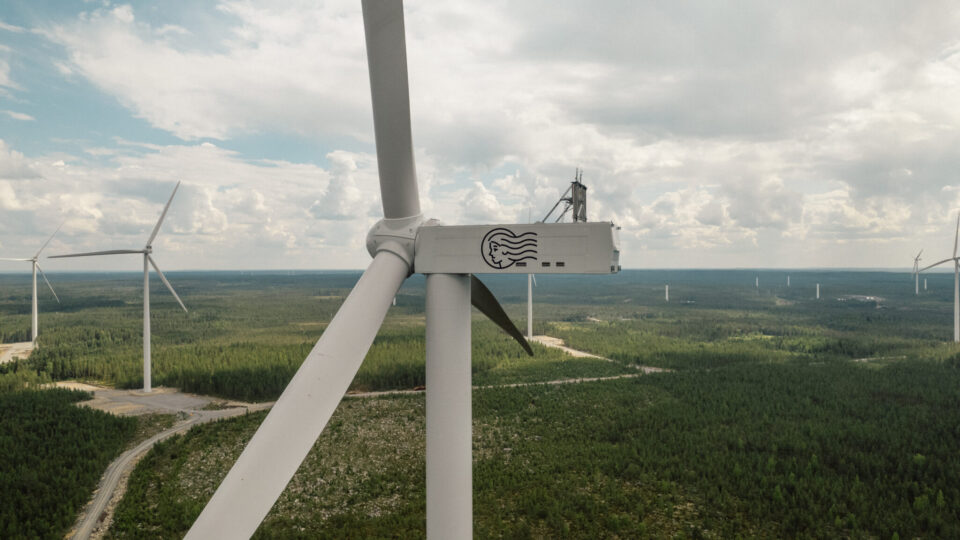In May 2025, the European Commission proposed a new roadmap to end the EU’s dependence on Russian gas by 31 December 2027. The plan, presented in Brussels, would prohibit any new long-term contracts with Russian suppliers and provide governments with legal grounds – such as force majeure or hardship clauses – to cancel existing deals.
The aim is to align EU energy policy with its political stance on Russia’s war in Ukraine, cutting off a major source of funding for Moscow. However, turning this proposal into reality involves difficult questions: how to get all 27 member states to agree, how to avoid breaking EU internal market rules, and how to justify the move under international trade law, particularly World Trade Organization (WTO) regulations.
From proposal to law
Under the REPowerEU Plan launched in 2022 – following Russia’s invasion of Ukraine – the EU has made a coordinated push to reduce its reliance on Russian gas. As a result, imports from Russia (including liquefied natural gas (LNG) and pipeline deliveries) have dropped from 45% of total supply in 2021 to just 19% in 2024.
Nevertheless, cutting ties completely is proving more difficult. Many of the remaining imports are locked into long-term contracts: in 2024, around two-thirds of the 32 billion cubic metres of pipeline gas and 20 billion of LNG from Russia are covered by such agreements.
To address this, the European Commission is considering a mix of legal tools. These include invoking force majeure (a clause that allows parties to suspend a contract due to major, unforeseen events), triggering hardship provisions, limiting Russian LNG through joint purchasing, and introducing sanctions to enforce the rules. By embedding these steps into EU law, Brussels hopes to avoid slow, unanimous decisions and ensure faster enforcement. However, the legal process is far from straightforward.

Zapolyarnoye gas field in Russia. Photo: Wikipedia.
Internal regulations roadblock
To impose sanctions, the EU needs unanimous support from all 27 member states. However, not all are on board. Hungary and Slovakia – still reliant on Russian gas – have already voiced their opposition to sweeping bans.
Even if the European Commission chooses to invoke force majeure, gas suppliers could challenge this in national courts. They may argue that no such unforeseeable disruption has actually occurred.
Another option is the hardship clause. These provisions allow contract terms to be renegotiated if unforeseen events make fulfilling the contract unusually difficult – though not impossible. The aim is to restore fairness if one side is hit by a severe and unexpected shift in economic conditions. However, this is not easy to prove. The EU would need to show that events since 2022 – such as volatile prices or geopolitical tensions – go far beyond normal business risks.
Applying this argument to Russian gas deals is particularly tricky. The criteria are strict. To activate the clause under the revised Gas Directive, Brussels would need to prove that the burden is extreme and cannot be managed through ordinary adjustments.
Another measure the EU introduced in December 2022 is the joint gas purchasing platform. This voluntary system was based on Article 122 of the EU treaties and aimed to help countries coordinate gas purchases among member states. It pooled demand, increased transparency, and avoided legal conflict by steering clear of mandatory quotas or purchase limits. Owing to its non-binding and cooperative nature, it did not clash with internal market principles such as the free movement of goods or EU competition rules.
However, that might change if the termination of contracts is now pursued through a new form of the joint platform. Under the new proposal, if the EU tries to cap Russian LNG or assign compulsory buying quotas, the platform would shift from voluntary to mandatory. That would raise legal concerns. Such measures could clash with internal market rules, including the free movement of goods and freedom of contract.
To implement them, the EU might need new laws – and possibly even unanimous agreement from all member states. Without careful legal design, the entire plan could be challenged by companies or countries claiming it breaks EU rules.
Beyond internal EU disagreements, the proposal also faces significant challenges on the international stage, particularly concerning WTO rules.
The EU would need to show that events since 2022 – such as volatile prices or geopolitical tensions – go far beyond normal business risks.

To impose sanctions, the EU needs unanimous support from all 27 member states. However, not all are on board. Hungary and Slovakia – still reliant on Russian gas – have already voiced their opposition to sweeping bans. Photo: Thomas Lohmann/Unsplash.
WTO principles and barriers
One of the toughest challenges for the EU’s gas ban plan lies in the rules of the WTO, specifically under the General Agreement on Tariffs and Trade (GATT). Russia has already used WTO rules to challenge the EU before – and very recently, it aimed to raise a case against the EU’s Carbon Border Adjustment Mechanism and an alleged export subsidy linked to emissions trading. So, it is likely Moscow will also contest the new gas restrictions in this way.
Russia might argue that the EU is treating its gas differently from that of other countries, breaching the WTO’s Most-Favoured-Nation (MFN) rule. This rule states that WTO members must treat all trading partners equally and without discrimination – if one country receives a special deal, all others should benefit equally. If the EU favours other LNG suppliers over Russia, that could pose a problem.
The EU, however, may rely on a special exception in GATT called Article XXI(b)(iii), also known as the ‘security exception’. It allows countries to take measures needed to protect their essential security interests during times of war or international emergencies. The EU could argue that limiting Russian gas is a matter of national security, not trade discrimination.
But there is a catch. The WTO panel made clear in a 2022 dispute involving Russia (Traffic in Transit (DS512)) that this ‘security exception’ is not something a country can invoke unilaterally. Instead, claims must pass an ‘objective test’. In other words, a country cannot simply assert “it’s necessary” – others must agree.
This could mean that the EU must demonstrate that:
- Stopping Russian gas imports helps protect its security interests (such as cutting financial flows to a country at war);
- There are no other reasonable ways to achieve this without unfairly harming Russia compared to others;
- The measures taken are proportionate to the threat perceived.
Proving each of these points is more difficult than it appears, as similar cases have shown before. If the EU fails to meet this challenge, it risks a WTO ruling that could force Brussels to revise or scrap its gas restrictions.
One of the toughest challenges for the EU’s gas ban plan lies in the rules of the WTO, specifically under the General Agreement on Tariffs and Trade.

A section of the Nord Stream gas pipeline on public display in Kotka, Finland. Photo: Vuo / CC BY-SA 4.0 licence.
Balancing energy security and legal rigour
The EU’s proposal for a Russian gas ban marks a major shift in EU energy policy: moving from merely diversifying supply to actively cutting ties with Russia. Yet, legal drafting cannot ignore political realities. Even after Russia’s invasion of Ukraine, member states still disagree on how quickly and by what means to disengage. The Commission must find wording that is clear enough to prevent legal challenges, yet flexible enough to secure consensus and parliamentary support.
Many practical questions remain. Will critical industries receive exemptions? How will contracts that include mixed supply sources be handled? Could the EU offer compensation to affected utilities or consumers? Without answers, the legal framework remains incomplete.
Conclusion: precedent or pyrrhic victory?
If the EU manages to legally phase out Russian gas, it will set an important example of pursuing geopolitical objectives while adhering to international and EU trade law. Yet, the road ahead is fraught. Balancing unanimous agreement, internal market freedoms, and WTO rules requires meticulous legal work and strong political will.
If the Commission succeeds, Brussels will have redefined the intersection of energy security and international law. If not, the EU may remain entangled in the very energy ties it seeks to break. The coming months will determine the outcome.
If the EU manages to legally phase out Russian gas, it will set an important example of pursuing geopolitical objectives while adhering to international and EU trade law.




